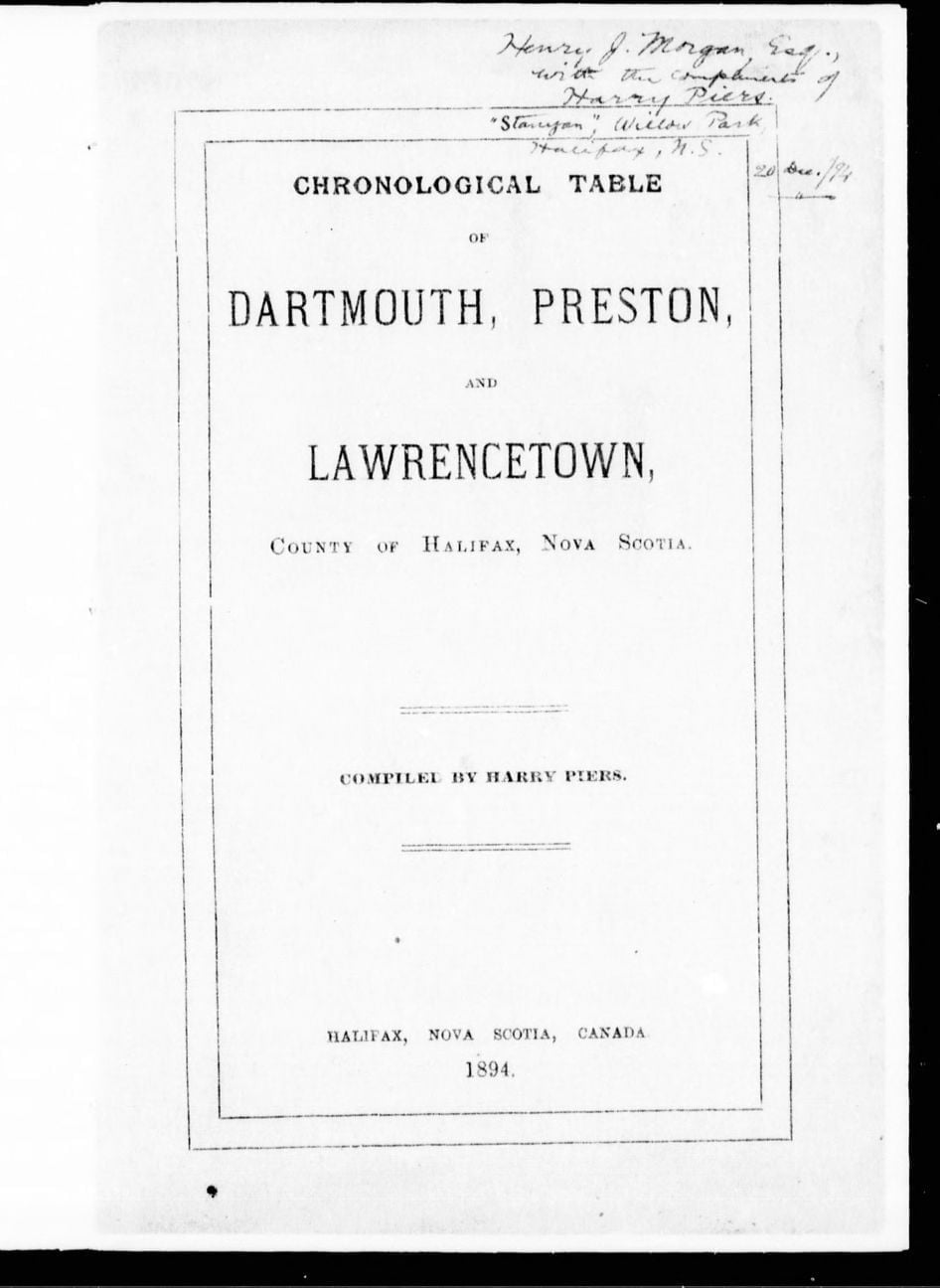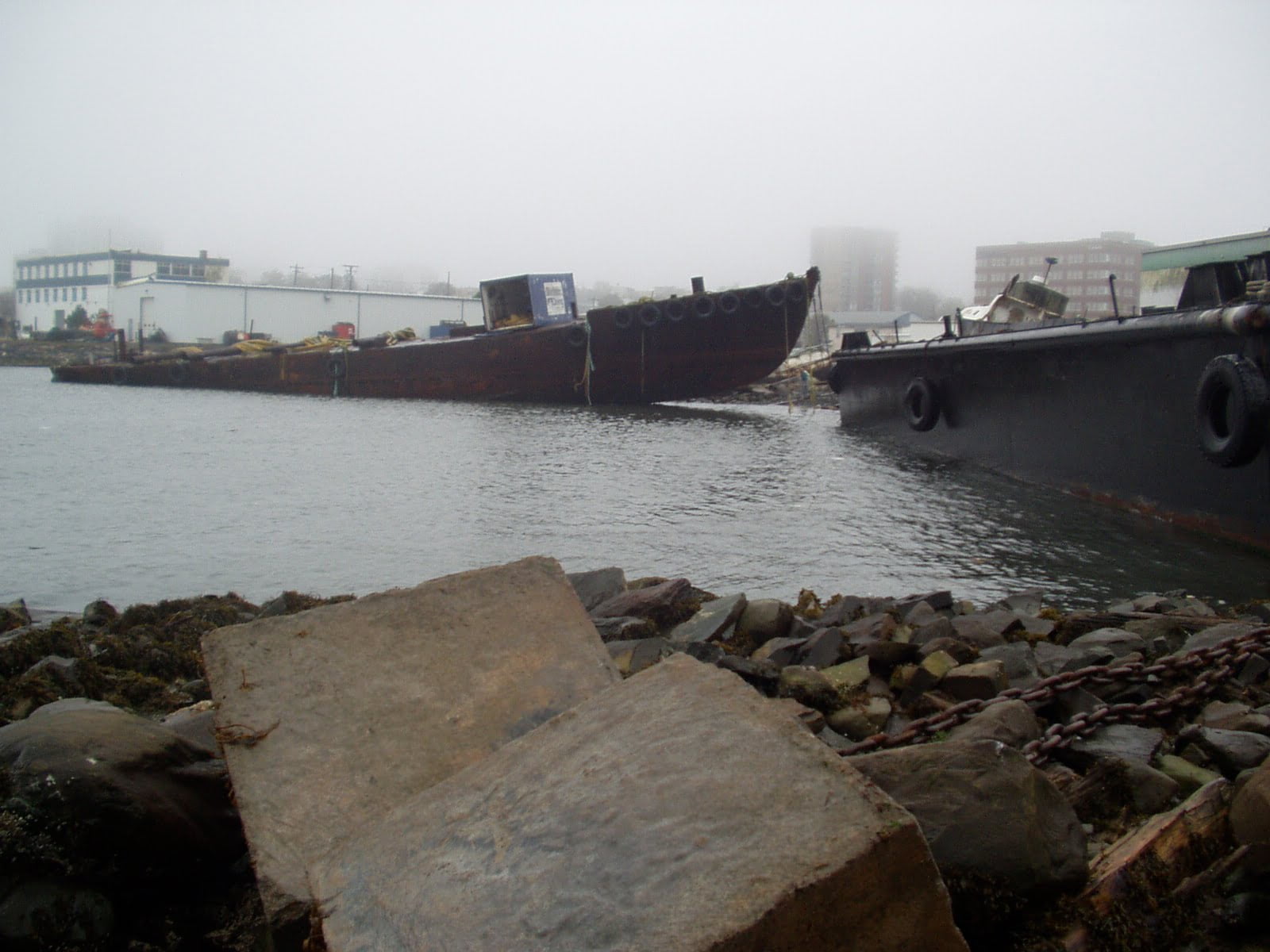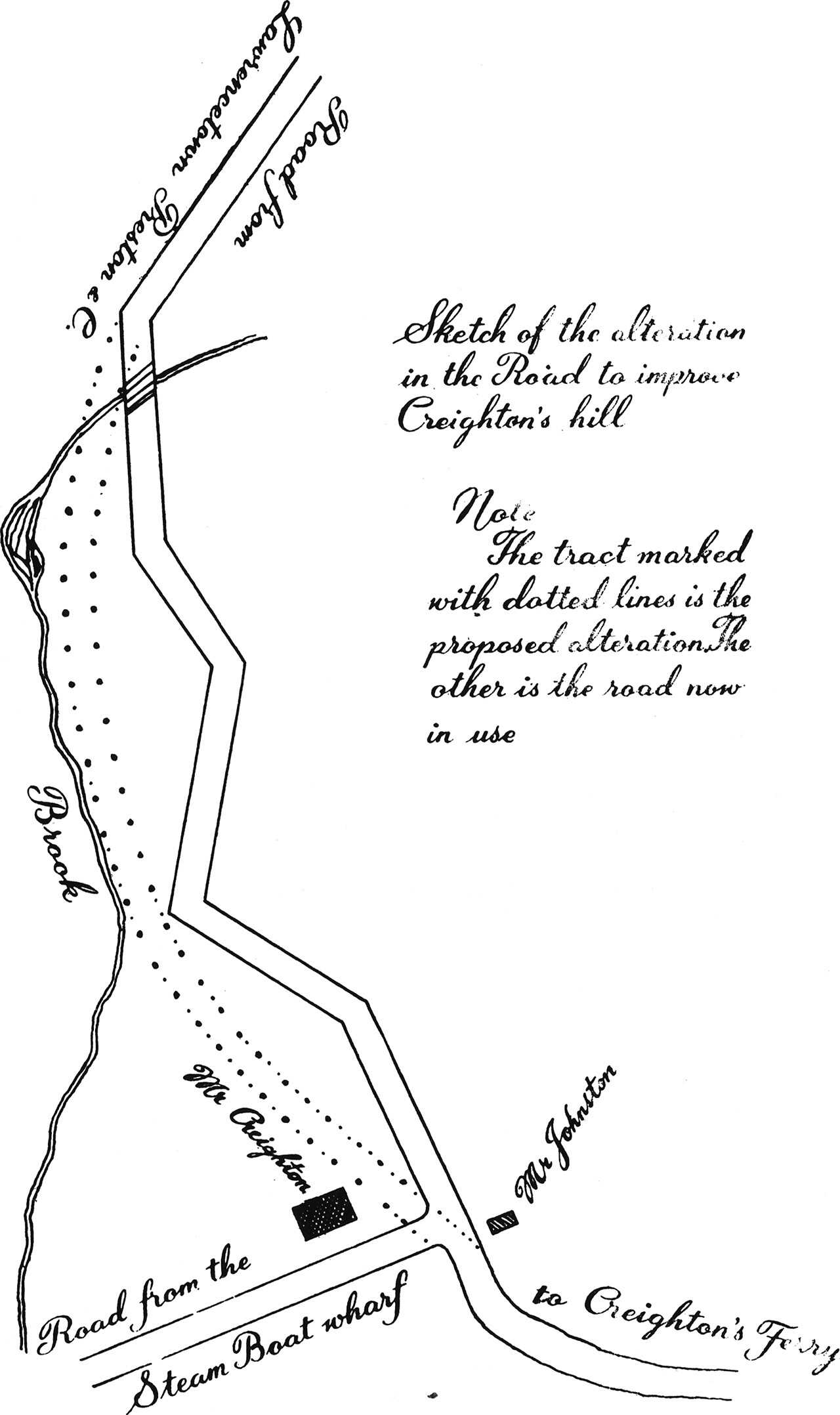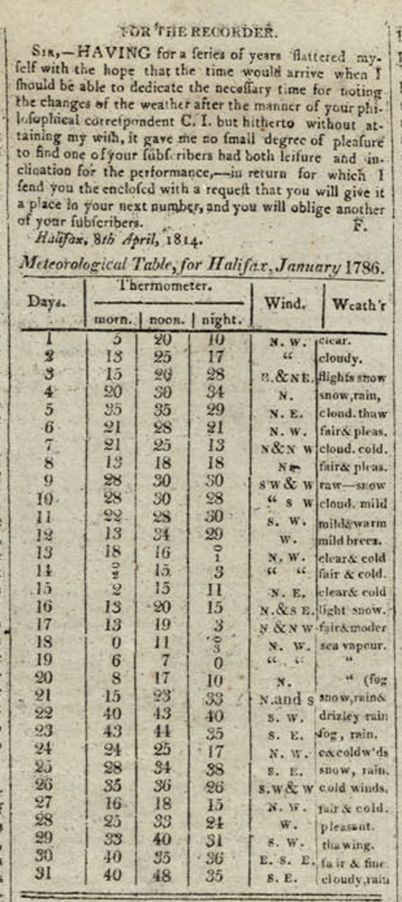
Weather Report
Diary of the Weather for February, 1817
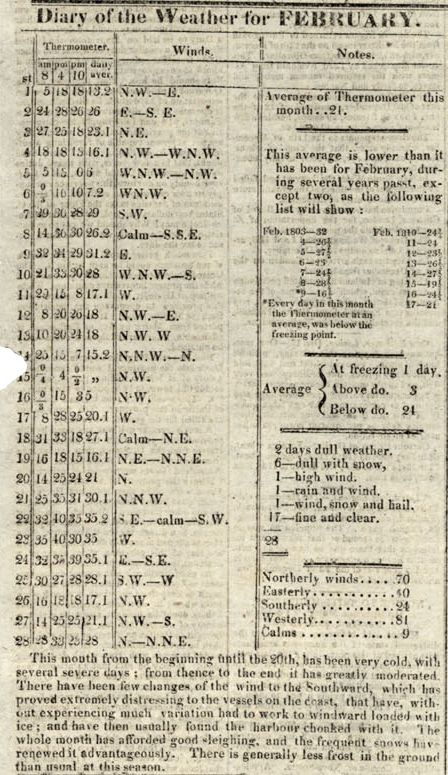
This month from the beginning until the 20th has been very cold, with several severe days; from thence to the end it has greatly moderated. There have been few changes of the wind to the Southward, which has proved extremely distressing to the vessels on the coast, that have, without experiencing much variation had to work to windward loaded with ice; and have then usually found the harbour choked with it. The whole month has afforded good sleighing, and the frequent snows have renewed it advantageously. There is generally less frost in the gound than usual at this season.
Acadian Recorder, 15 March 1817, Volume 5 Number 11 https://archives.novascotia.ca/newspapers/archives/?ID=975&Page=201113881
When autumn lingers in the lap of winter
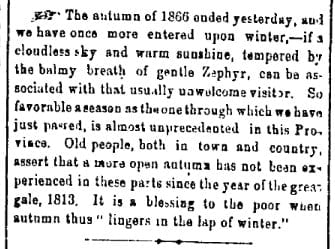
The autumn of 1866 ended yesterday, and we have once more entered upon winter, —if a cloudless sky and warm sunshine, tempered by the balmy breath of gentle Zephyr, can be associated with that usually unwelcome visitor. So favorable a season as the one through which we have just passed, is almost unprecedented in this Province. Old people, both in town and country, assert that a more open autumn has not been experienced in these parts since the year of the great gale, 1813. It is a blessing to the poor when autumn thus “lingers in the lap of winter”.
Halifax Citizen, Dec. 1, 1866. Page 2 Column 6. https://news.google.com/newspapers?nid=D90uR9ClOh8C&dat=18661201&printsec=frontpage&hl=en
History of Halifax City
“The [Mi’kmaq] had appeared in the neighborhood of the town for several weeks, but intelligence had been received that they had commenced hostilities, by the capture of twenty persons at Canso… On the last day of September they made an attack on the sawmill at Dartmouth, then under the charge of Major Gilman. Six of his men had been sent out to cut wood without arms. The [Mi’kmaq] laid in ambush, killed four and carried off one, and the other escaped and gave the alarm, and a detachment of rangers was sent after the [Mi’kmaq], who having overtaken them, cut off the heads of two [Mi’kmaq] and scalped one.
This affair is mentioned in a letter from a gentleman in Halifax to Boston, dated October 2nd as follows: “About seven o’clock on Saturday morning before, as several of Major Gilman’s workmen with one soldier, unarmed, were hewing sticks of timber about 200 yards from his house and mills on the east side of the harbor, they were surprised by about 40 [Mi’kmaq], who first fired two shots and then a volley upon them which killed four, two of whom they scalped, and cut off the heads of the others, the fifth is missing and is supposed to have been carried off.”
“The Governor deeming it expedient that some permanent system of judicial proceedings to answer the immediate exigencies of the Colony should be established, a committee of Council was accordingly appointed to examine the various systems in force in the old Colonies. On 13th December, Mr. Green reported that after a careful investigation, the laws of Virginia were found to be most applicable to the present situation of the province. The report was adopted. It referred principally to the judicial proceedings in the General Courts, the County Courts, and other tribunals.”
[More on the constitutional connections between Nova Scotia and Virginia: Virginia and Nova Scotia: An Historical Note, “As Near as May Be Agreeable to the Laws of this Kingdom”: Legal Birthright and Legal Baggage at Chebucto, 1749, Draught of H.M. Commission to Richard Philips to be Governor of Placentia and Cap. General and Governor in Chief of Nova Scotia or Accadie, June 19 1719 (relying on) Commission and Instructions to the Earl of Orkney for the Government of Virginia, 1715, Catalogue of books in the Nova Scotia Legislative Council Library, The First Charter of Virginia (1606)]
“In the month of August, 1750, three hundred and fifty-three settlers arrived in the ship Alderney… Those who came in the ship Alderney, were sent to the opposite side of the harbor, and commenced the town of Dartmouth, which was laid out in the autumn of that year. In December following, the first ferry was established, and John Connor appointed ferryman by order in Council.
In the Spring of the following year the [Mi’kmaq] surprised Dartmouth at night, scalped a number of settlers and carried oft several prisoners. The inhabitants, fearing an attack, had cut down the spruce trees around their settlement, which, instead of a protection, as was intended, served as a cover for the enemy. Captain Clapham and his company of Rangers were stationed on Block-house hill, and it is said remained within his block-house firing from the loop-holes, during the whole affair. The [Mi’kmaq] were said to have destroyed several dwellings, sparing neither women nor children. The light of the torches and the discharge of musketry alarmed the inhabitants of Halifax, some of whom put off to their assistance, but did not arrive in any force till after the [Mi’kmaq] had retired. The night was calm, and the cries of the settlers, and whoop of the [Mi’kmaq] were distinctly heard on the western side of the harbor. On the following morning, several bodies were brought over — the [Mi’kmaq] having carried off the scalps. Mr. Pyke, father of the late John George Pyke, Esq., many years police magistrate of Halifax, lost his life on this occasion. Those who fled to the woods were all taken prisoners but one. A court martial was called on the 14th May, to inquire into the conduct of the different commanding officers, both commissioned and non-commissioned, in permitting the village to be plundered when there were about 60 men posted there for its protection.
There was a guard house and small military post at Dartmouth from the first settlement, and a gun mounted on the point near the Saw Mill (in the cove) in 1749. One or two transports, which had been housed over during winter and store ships were anchored in the cove, under cover of this gun, and the ice kept broke around them to prevent the approach of the [Mi’kmaq]. The attempt to plant a settlement at Dartmouth, does not appear to have been at first very successful. Governor Hobson in his letter to the Board of Trade, dated 1st October, 1753, says, “At Dartmouth there is a small town well picketed in, and a detachment of troops to protect it, but there are not above five families residing in it, as there is no trade or fishing to maintain any inhabitants, and they apprehend danger from the [Mi’kmaq] in cultivating any land on the outer side of the pickets.”
There is no record of any concerted attack having been made by the [Mi’kmaq] or French on the town of Halifax.”
“German palatine settlers (arrived on the 10th of June 1751, and) they were employed at Dartmouth in picketing in the back of the town.”
“On February 3rd 1752, a public ferry was established between Halifax and Dartmouth and John Connors appointed ferryman for three years, with the exclusive privilege, and ferry regulations were also established.”
“The government mills at Dartmouth, under charge of Captain Clapham, were sold at auction in June. They were purchased by Major Gilman for $310.”
“In 1754, an order was made for permission to John Connors, to assign the Dartmouth Ferry to Henry Wynne and William Manthorne.”
January 26th 1756, the term of Henry Wynne and William Manthorne’s licenses of the Dartmouth and Halifax ferry having expired, John Rock petitioned and obtained the same on the terms of his predecessors.”
“(1757) was also memorable as the one in which Representative government was established in Nova Scotia. The subject of calling a Legislative Assembly had undergone much discussion. It had been represented by the Governor and Council, to the authorities in England, that such a step at that particular time would be fraught with much danger to the peace of the colony. Chief Justice Belcher, however, having given his opinion that the Governor and Council possessed no authority to levy taxes, and their opinion being confirmed in England, it was resolved by council on January 3rd 1757, that a representative system should be established and that twelve members should be elected by the province at large, until it could be conveniently divided into counties, and that the township of Halifax should send four members, Lunenburg two, Dartmouth one, Lawrencetown one, Annapolis Royal one, and Cumberland one, making in all twenty-two members, and the necessary regulations were also made for carrying into effect the object intended.”
“In September, 1785, a number of whalers from Nantucket came to Halifax ; three brigantines and one schooner, with crews and everything necessary for prosecuting the whale fishery, which they proposed to do under the British flag. Their families were to follow. A short time after they were joined by three brigantines and a sloop from the same place. On the twentieth of October following, the Chief Land Surveyor was directed to make return of such lands as were vacant at Dartmouth to be granted to Samuel Starbuck, Timothy Folger, and others, from Nantucket, to make settlement for the whalers. The Town of Dartmouth had been many years previously laid out in lots which had been granted or appropriated to individuals, some of whom had built houses, and others though then vacant, had been held and sold from time to time by their respective owners. Most of these lots were reported vacant by Mr. Morris, the surveyor, and seized upon by the Government, as it is said, without any proceeding of escheat, and re-granted to the Quakers from Nantucket, which caused much discontent, and questions of title arose and remained open for many years after.”
“The whale fishery was the chief subject which engaged the attention of the public during (1785). Much advantage was expected to accrue to the commerce of the place from the Quakers from Nantucket having undertaken to settle in Dartmouth. They went on prosperously for a short time, until they found the commercial regulations established in England for the Colonies were hostile to their interests, and they eventually removed, some of them, it is said, to Wales and other parts of Great Britain, where they carried on their fishery to more advantage.
A petition was presented this autumn to the Governor and Council from a number of merchants, tradesmen and other inhabitants, praying for a Charter of Incorporation for the Town of Halifax. This was the first occasion on which the subject was brought prominently before the public. It was, however, not deemed by the government ” expedient or necessary ” to comply with the prayer of the petition. The reasons are not given in the Minute of Council, which bears date 17th November, 1785. The names of the Councillors present were Richard Bulkeley, Henry Newton, Jonathan Binney, Arthur Goold, Alexander Brymer, Thomas Cochran and Charles Morris.
The functions of His Majesty’s Council at this period of our history embraced all departments of executive authority in the Colony. They were equally supreme in the control of town affairs as those of the province at large. The magistrates, though nominally the executive of the town, never acted in any matter of moment without consulting the Governor and Council. The existence of a corporate body having the sole control of town affairs would in a great measure deprive them of that supervision which they no doubt deemed, for the interest of the community, should remain in the Governor and Council.”
“Folger and Starbuck, the Quaker whalers, who settled at Dartmouth a year or two since, left (in 1792), for Milford Haven in Great Britain, where they expected to carry on their whale fishery with greater facilities than at Dartmouth.”
“…the Governor, M. Danseville, with several hundred prisoners and stores were brought to Halifax. They landed on the 20th of June (1793). Governor Danseville was placed on parole, and resided at Dartmouth for many years in the house known as Brook House, now or lately the residence of the Hon. Michael Tobin, Jr., about a couple of miles or more from Dartmouth town. The old gentleman displayed some taste in beautifying the grounds at Brook House. He built a fish pond and laid out walks among the beech and white birch groves near the house. The pond still remains, but the walks and most of the trees have long since disappeared. He remained a prisoner with an allowance from Government until the peace of 1814, when he returned to his own country a zealous royalist.”
“a poll tax had been imposed by Act of Legislature in 1791.”
“During the spring of 1796 Halifax suffered from a scarcity of provisions. The inhabitants were indebted to Messrs. Hartshorne and Tremain, whose mills at Dartmouth enabled them, through the summer, to obtain flour at a reduced price and to afford a sufficient supply for the fishery.”
“The following list of town officers appointed by the Grand Jury for the Town March 5th 1806, will be found interesting: … Edward Foster, Surveyor of highways from Dartmouth Town Plot to the Basin; Samuel Hamilton, Constable from Dartmouth Town Plot to the Basin; Jon. Tremain, Sr., William Penny, Surveyors of Highways, Dartmouth Town Plot; David Larnard, Constable, Dartmouth Town Plot; James Munn, Pound Keeper, Dartmouth Town Plot; Henry Wisdom, Surveyor of Highways from the Ferry up the Preston Road to Tanyard”
“In the autumn (of 1814) the small pox made its appearance in Dartmouth and Preston and was very fatal among the Chesapeake blacks].”
“There were two ferries (in 1815). The upper ferry was conducted by John Skerry, whose memory is still cherished by many, both in Dartmouth and Halifax, as one of the most obliging and civil men of his day. Skerry’s wharf in Dartmouth was a short distance south of the steam boat wharf (—at the foot of Ochterloney Street today). The other ferry was the property of Mr. James Creighton, known as the Lower Ferry, situate to the south of Mott’s Factory (—at the bottom of Old Ferry Road). It was conducted for Mr. Creighton by deputy and was afterwards held under lease by Joseph Findlay, the last man who ran a ferry boat with sails and oars in Halifax Harbor. These ferry boats were furnished with a lug sail and two and sometimes four oars. They were large clumsy boats and occupied some thirty or forty minutes in making the passage across the harbor. There were no regular trips at appointed hours. When the boat arrived at either side the ferryman blew his horn (a conch shell) and would not start again until he had a full freight of passengers. The sound of the conch and the cry of ”Over! Over! ” was the signal to go on board. The boats for both ferries landed at the Market Slip at Halifax.
An act of the Legislature had been obtained this session to incorporate a Steamboat Company with an exclusive privilege of the ferry between Halifax and Dartmouth for 25 years. They could not succeed in getting up a company, steam navigation being then in its infancy, and in the following year had the act amended to permit them to run a boat by horses to be called the Team-boat. This boat consisted of two boats or hulls united by a platform with a paddle between the boats. The deck was surmounted by a round house which contained a large cogwheel, arranged horizontally inside the round house, to which were attached 8 or 9 horses harnessed to iron stanchions coming down from the wheel. As the horses moved round, the wheel turned a crank which moved the paddle. It required about twenty minutes for this boat to reach Dartmouth from Halifax. It was considered an immense improvement on the old ferry boat arrangement, and the additional accommodation for cattle, carriages and horses was a great boon to the country people as well as to the citizens of Halifax, who heretofore had been compelled to employ Skerry’s scow when it was found necessary to carry cattle or carriages from one side of the harbor to the other.
The first trip of the Team-boat was made on the 8th November, 1810. The following year an outrage was committed which caused much excitement and feeling in the town. All the eight horses in the boat were stabbed by a young man named Hurst. No motive for this cruel act could be assigned, drunkenness alone appearing to be the cause. The culprit was tried for the offence and suffered a lengthy imprisonment. Mr. Skerry kept up a contest with the Company for several years, until all differences were arranged by his becoming united with the Company, and after a short time old age and a small fortune, accumulated by honest industry, removed him from the scene of his labors.
The team-boat after a year or two received an addition to her speed by the erection of a mast in the centre of the round house, on which was hoisted a square sail when the wind was fair, and afterwards a topsail above, which gave her a most picturesque appearance on the water. This addition considerably facilitated her motion and relieved the horses from their hard labor. As traffic increased several small paddle boats were added by the Company, which received the appellation of Grinders. They had paddles at the sides like a steamboat, which were moved by a crank turned by two men. In 1818 the proprietors of the old ferries petitioned the House of Assembly against the Teamboat Company suing these small boats as contrary to the privilege given them by the Act of Incorporation. It afterwards became a subject of litigation until the question was put an end to by Mr. Skerry becoming connected with the Company. Jos. Findlay continued to run his old boats from the south or lower ferry until about the year 1835.”
“During the month of February (1818), the harbor was blocked up with float ice as far down as George’s Island. Between 13th and 20th, persons crossed from Dartmouth on the ice at the Narrows.”
“By the 27th of January 1821 the ice formed a firm bridge between Halifax and Dartmouth, over which a continuous line of sleighs, teams and foot passengers might be seen on market days.”
Akins, Thomas B., 1809-1891. History of Halifax City. [Halifax, N.S.?: s.n.], 1895. https://hdl.handle.net/2027/aeu.ark:/13960/t7zk65s8s
Sketches on a tour through the northern and eastern states, the Canadas & Nova Scotia
“I learned… that there was a class of persons in Nova Scotia called the Blue Noses (so called from a kind of potato which thrives well here.) Whether this nick-name is an appropriate one or not, I did not become sufficiently acquainted with their habits to determine. This much however is true, that they are not in the habit of setting a very high value either on their own time or that of others.”
“In spite of the large extent of barren and rocky land in the south, and what is a more serious evil, those seven or eight months of frost and snow, which crowd the labors of the agriculturalist into so brief a season, the resources of the province are very great.”
“In this province the stranger may see that there is a political dissatisfaction among the inhabitants; however not to so great an extent as in the Canadas. In this province may be heard complaints against the British government, for their habitual disregard of the claims of native merit, as citizens native born, men too of the greatest talent and moral worth are excluded from the most important places of trust and honor; all posts of rank and profit being awarded to foreigners, or which is the same thing, to natives of the mother country, who they contend, have not their hearts in the country where they are but temporary soujourners, which by the way, is not so absurd an argument as is sometimes held forth in matters of less importance.”
Myers, J. C. Sketches On a Tour Through the Northern And Eastern States, the Canadas & Nova Scotia. Harrisonburg [Va.]: J.H. Wartmann and brothers, prs., 1849. https://hdl.handle.net/2027/mdp.39015059481047
On the diurnal and annual variations of temperature at Halifax, Nova Scotia
Monthly mean normal temperatures, at Halifax, for each of the twenty four hours, from Bi-hourly observations in the years 1867-1869 (°F):
| Hour | Jan | Feb | Mar | Apr | May | Jun | Jul | Aug | Sep | Oct | Nov | Dec | Year | ||
| Midn | 18.83 | 20.90 | 24.12 | 33.05 | 42.73 | 52.75 | 58.79 | 58.97 | 54.07 | 42.78 | 34.85 | 23.63 | 38.79 | ||
| 1am | 18.24 | 20.32 | 23.11 | 32.15 | 42.11 | 51.92 | 57.78 | 58.04 | 53.53 | 42.51 | 34.65 | 23.47 | 38.15 | ||
| 2am | 17.40 | 19.74 | 22.09 | 31.36 | 41.44 | 50.89 | 56.64 | 57.13 | 52.82 | 41.86 | 34.14 | 23.28 | 37.40 | ||
| 3am | 16.70 | 19.28 | 21.55 | 30.85 | 40.73 | 50.06°F | 55.88°F | 56.63 | 52.27 | 41.16 | 33.59 | 23.06 | 36.81 | ||
| 4am | 16.49°F | 19.09°F | 21.39 | 30.70°F | 40.49°F | 50.15 | 55.96 | 56.61°F | 52.04°F | 40.83°F | 33.34°F | 23.05°F | 36.68°F | ||
| 5am | 16.63 | 19.12 | 21.35°F | 31.06 | 41.33 | 51.51 | 57.01 | 57.09 | 52.21 | 40.97 | 33.38 | 23.27 | 37.08 | ||
| 6am | 16.72 | 19.23 | 21.64 | 32.12 | 43.26 | 53.69 | 58.77 | 58.32 | 53.06 | 41.49 | 33.48 | 23.45 | 37.94 | ||
| 7am | 16.75 | 19.58 | 22.83 | 33.94 | 45.71 | 56.08 | 61.03 | 60.57 | 54.79 | 42.52 | 33.70 | 23.52 | 39.25 | ||
| 8am | 17.20 | 20.54 | 24.98 | 36.24 | 48.21 | 58.46 | 63.78 | 63.61 | 57.21 | 44.36 | 34.45 | 23.88 | 41.08 | ||
| 9am | 18.47 | 20.26 | 27.65 | 38.58 | 50.66 | 60.93 | 66.72 | 66.70 | 59.85 | 46.94 | 35.90 | 24.91 | 43.30 | ||
| 10am | 20.39 | 24.30 | 30.24 | 40.59 | 53.02 | 63.30 | 69.23 | 69.17 | 62.30 | 49.56 | 37.60 | 26.38 | 45.50 | ||
| 11am | 22.07 | 26.09 | 32.30 | 42.77 | 54.95 | 65.14 | 70.90 | 70.78 | 64.21 | 51.42 | 38.91 | 27.74 | 47.27 | ||
| Noon | 23.38 | 27.44 | 33.57 | 43.83 | 56.04 | 66.23 | 71.99 | 71.83 | 65.36 | 52.29 | 39.61 | 28.70 | 48.36 | ||
| 1pm | 24.16 | 28.44 | 34.10 | 44.91 | 56.24°F | 66.65 | 72.81 | 72.54 | 65.92 | 52.62 | 39.86°F | 29.17°F | 48.95 | ||
| 2pm | 24.38°F | 29.03°F | 34.15°F | 45.19°F | 55.96 | 66.66°F | 73.30°F | 72.88°F | 66.22°F | 52.77°F | 39.73 | 29.04 | 49.11°F | ||
| 3pm | 23.96 | 28.90 | 33.75 | 44.57 | 55.55 | 66.49 | 73.17 | 72.65 | 66.06 | 52.35 | 39.13 | 28.28 | 48.74 | ||
| 4pm | 23.01 | 27.90 | 32.68 | 43.31 | 54.87 | 66.08 | 72.33 | 71.65 | 64.78 | 50.88 | 38.11 | 27.19 | 47.73 | ||
| 5pm | 21.88 | 26.35 | 30.97 | 41.73 | 53.46 | 65.04 | 70.81 | 69.84 | 62.27 | 48.65 | 37.03 | 26.17 | 46.18 | ||
| 6pm | 20.98 | 24.83 | 29.15 | 39.84 | 51.14 | 62.95 | 68.53 | 67.37 | 59.48 | 46.69 | 36.29 | 25.38 | 44.39 | ||
| 7pm | 20.37 | 23.74 | 27.67 | 37.76 | 48.49 | 59.98 | 65.66 | 64.63 | 57.44 | 45.65 | 35.92 | 24.81 | 42.68 | ||
| 8pm | 19.95 | 23.09 | 26.52 | 35.93 | 46.38 | 57.08 | 62.89 | 62.19 | 56.22 | 45.10 | 35.64 | 24.45 | 42.29 | ||
| 9pm | 19.60 | 22.60 | 25.61 | 34.80 | 45.10 | 55.07 | 60.96 | 60.57 | 55.37 | 44.37 | 35.30 | 24.27 | 40.30 | ||
| 10pm | 19.34 | 22.07 | 25.03 | 34.24 | 44.26 | 53.99 | 60.00 | 59.87 | 54.72 | 43.51 | 34.99 | 24.10 | 39.68 | ||
| 11pm | 19.13 | 21.48 | 24.68 | 33.32 | 43.47 | 53.38 | 59.45 | 59.52 | 54.36 | 42.95 | 34.86 | 23.85 | 39.20 | ||
| Mean | 19.83°F | 23.18 | 27.13 | 37.2 | 48.15 | 58.52 | 64.35°F | 64.13 | 58.19 | 46.01 | 36.02 | 25.21 | 42.33°F |

Kingston, G. T. (George Templeman), 1817-1886, and F Allison. On the Diurnal And Annual Variations of Temperature At Halifax, Nova Scotia. [S.l.: s.n., 1871. https://hdl.handle.net/2027/aeu.ark:/13960/t70v9860r
Precipitation at Halifax, 1867-1875
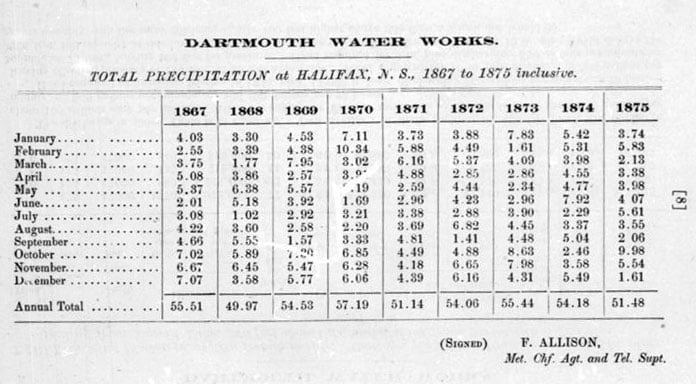
Keefer, Thomas C. “Report on proposed water supply for Dartmouth, N.S.” 1876 https://www.canadiana.ca/view/oocihm.01289/1?r=0&s=1
Chronological Table of Dartmouth, Preston, and Lawrencetown
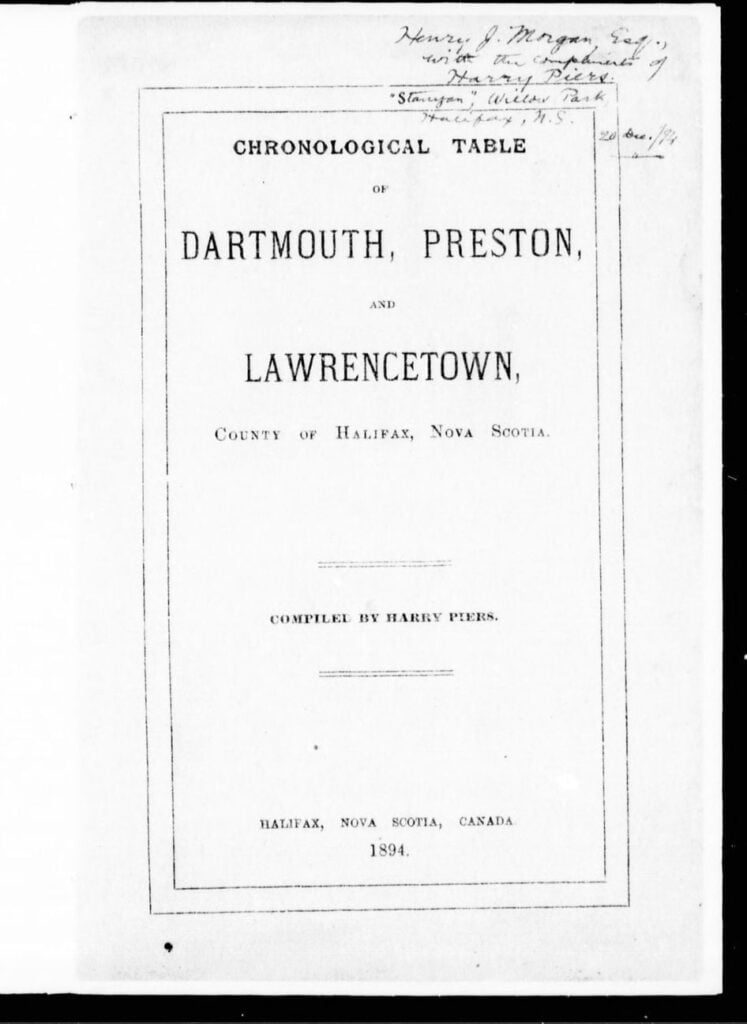
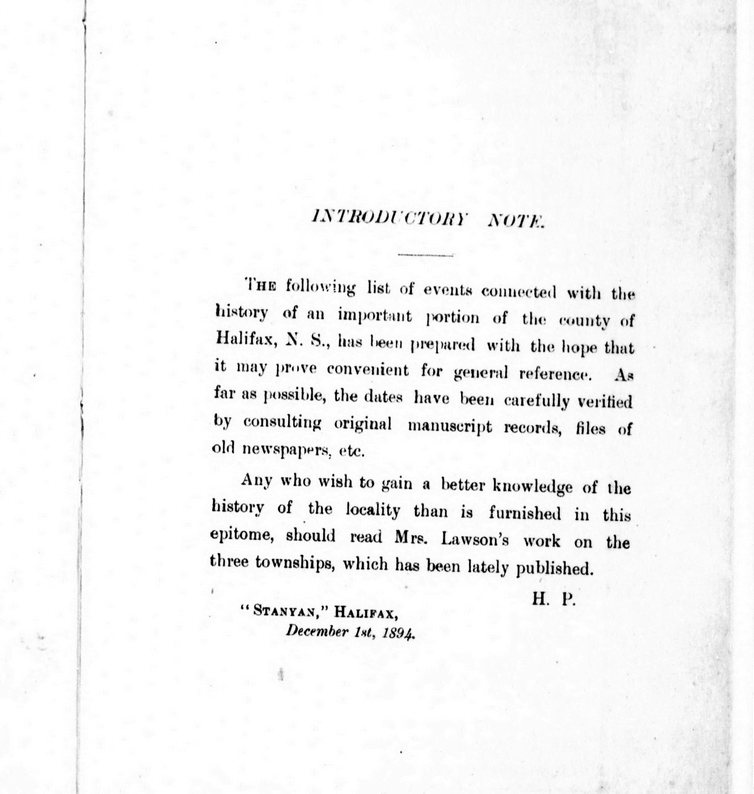
Between 1746 and 1894, Dartmouth’s history unfolds with significant events including the arrival of settlers, establishment of saw-mills, and conflicts with the Mi’kmaq people. Dartmouth saw fluctuations in population, the building of churches and other infrastructure, and incorporation as a town in 1873. Economic activities like shipbuilding, ferry services, and the discovery of gold at Waverley mark periods of prosperity. However, tragedies such as fires, mysterious disappearances, and drowning incidents also punctuate Dartmouth’s timeline.
The town experienced advancements such as the introduction of steamboats, electricity, and the establishment of amenities like bathing houses and public reading rooms. Infrastructure projects like railway construction, water supply, and sewerage systems reflect efforts to modernize Dartmouth. Despite setbacks like bridge collapses and refinery closures, the town continued to evolve and grow, reaching a population of over 6,000 by 1891.
1746-1799
- Duc d’Anville arrived at Chebucto, 10 Sept 1746
- Halifax founded, 21 June 1749
- [Mi’kmaq] attacked 6 men at Maj. Gilman’s saw-mill, Dartmouth Cove, killing 4, 30 Sept 1749
- Saw-mill let to Capt. Wm. Clapham, 1750
- Alderney arrived from Europe with 353 settlers, Aug. 1750
- Town of Dartmouth laid out for the Alderney emigrants, Autumn 1750
- Order issued relative to guard at Dartmouth, 31 Dec. 1750
- Sergeant and 10 or 12 men ordered to mount guard during the nights at the Blockhouse, Dartmouth, 23 Feb. 1751
- [Mi’kmaq] attacked Dartmouth, killing a number of the inhabitants, 13 May, 1751
- German emigrants arrived at Halifax and were employed in picketing the back of Dartmouth, July 1751
- Ferry established between Dartmouth and Halifax, John Connor, ferryman, 3 Feb. 1752
- Mill at Dartmouth sold to Maj. Ezekiel Gilman, June 1752
- Population of Dartmouth 193, or 53 families, July 1752
- Advertisement ordered for the alteration of the style [Introduction of the Gregorian calendar], 31 Aug. 1752
- Permission given Connor to assign ferry to Henry Wynne and William Manthorne, 22 Dec 1752
- Township of Lawrencetown granted to 20 proprietors, 10 June 1754
- Fort Clarence built, 1754
- John Rock appointed ferryman in place of Wynne and Manthorne, 26 Jan. 1756
- Troops withdrawn from Lawrencetown by order dated, 25 Aug, 1757
- Dartmouth contained only 2 families, 9 Jan 1762
- Phillip Westphal (afterwards Admiral), born, 1782
- Preston Township granted to Theophilus Chamberlain and 163 others, chiefly loyalists, 15 Oct, 1784
- Free [black people] arrived at Halifax and afterwards settled at Preston, Apr., 1785
- George Augustus Westphal (afterwards Sir) born, 1785
- Whalers from Nantucket arrived at Halifax, 1785
- Town lots of Dartmouth escheated [See also] in order to grant them to the Nantucket whalers (Quakers), 2 Mar, 1786
- Grant of land at Preston to T. Young and 34 others, 20 Dec. 1787
- Common granted to inhabitants of Dartmouth [District, aka Township], 4 Sept. 1788 [Oct 2, 1758?] [–see also: “For regulating the Dartmouth Common, 1841 c52“]
- First church at Preston consecrated (on “Church Hill”), 1791
- Free [black people] departed for Sierra Leone, 15 Jan, 1792
- Nantucket Whalers left Dartmouth, 1792
- Francis Green built house (afterwards “Maroon Hall”) near Preston, 1792
- Dartmouth, Preston, Lawrencetown and Cole Harbour erected into parish of St. John, Nov. 22, 1792
- M. Danesville, governor of St. Pierre, arrived at Halifax (afterwards lived at “Brook House”), 20 June 1793
- Act passed to build bridge of boats across the Harbour (1796, c7), 1796
- Maroons arrived at Halifax (afterwards settled at Preston), 22 or 23 July, 1796
- Subject of a canal between Minas Basin and Halifax Harbour brought before the legislature, 1797
- Col. W.D. Quarrell returned to Jamaica, Spring 1797
- Capt. A. Howe took charge of Maroons, Ochterloney having been removed, 1797
- John Skerry began running ferry, about 1797
- Howe removed and T. Chamberlain appointed to superintend Maroons, 9 July, 1798
- Heavy storm did much damage, 25 Sept, 1798
- Mary Russell killed by her lover, Thomas Bembridge, at her father’s house, Russell’s Lake, 27 Sept. 1798
- Bembridge executed at Halifax, 18 Oct, 1798
1800-1849
- Maroons left Halifax, Aug 1800
- “Maroon Hall” sold to Samuel Hart, 8 Oct, 1801
- Town of Dartmouth said to have contained only 19 dwellings, 1809
- S. Hart died at “Maroon Hall” (property afterwards sold to John Prescott), 1810
- United States prisoners of war on parole at Dartmouth, Preston, etc. About 1812-1814
- Terrible gale, much damage to shipping 12 Nov 1813
- Gov Danseville left “Brook House”, 1814
- [Black people] arrived from Chesapeake Bay, 1 Sept 1814
- Smallpox appeared in Dartmouth, Preston, etc., Autumn, 1814
- Margaret Floyer died at “Brook House”, 9 Dec 1814
- Act passed to incorporate Halifax Steamboat Co., 1815
- Act passed allowing substitution of team-boats for steamboats by the company just mentioned, 1816
- Team-boat Sherbrooke launched, 30 Sept, 1816
- The team-boat made its first trip, 8 Nov., 1816
- Foundation stone of Christ Church laid, 9 July, 1817
- John Prescott died at “Maroon Hall” (property afterwards sold to Lieut. Katzmann), 1821
- Ninety Chesapeake Bay [black people] sent to Trinidad, 1821
- Dartmouth Fire Engine Co. established, 1822
- Lyle’s and Chapel’s shipyards opened, About 1823
- Act passed to authorize incorporation of a canal company, 1824
- Theophilus Chamberlain died, 20 July, 1824
- Joseph Findlay became lessee of Creighton’s ferry, About 1824
- Shubenacadie Canal Co. incorporated by letters patent, 1 June, 1826
- Ground first broken on canal, at Port Wallace, 25 July, 1826
- Consecration of church at Preston which had been built to replace the one consecrated in 1791, 1828
- Congregation of Church of St. James (Presbyterian) formed, Jan (?), 1829
- St. Peter’s Chapel commenced at Dartmouth, 26 Oct. 1829
- J. Findlay succeeded by Thos. Brewer at Creighton’s Ferry, About 1829-30
- Sir C. Ogle launched (first steamboat on ferry), 1 Jan, 1830
- Sixteen persons drowned by the upsetting of one of the small ferry boats, 14 Aug, 1831
- Ferry steamboat Boxer launched, 1832
- Brewer retired, and Creighton’s or the lower ferry ceased to exist, About 1832-33
- A. Shiels started Ellenvale Carding Mill, July, 1834
- Cholera in Halifax, Aug to Oct 1834
- William Foster built an ice-house near the lakes, 1836
- “Mount Amelia” built by Hon. J.W. Johnston, About, 1840
- Death of Meagher children, Jane Elizabeth, and Margaret, in woods near Preston (bodies found 17 April), April 1842
- Adam Laidlaw began ice-cutting on a large scale, 1843
- Dartmouth Baptist Church organized, 29 Oct, 1843
- Death of Lieut. C. C. Katzmann at “Maroon Hall”, 15 Dec, 1843
- Ferry steamboat Micmac build, 1844
- Dartmouth Baptist meeting-house opened, Sept, 1844
- Cole Harbour Dyke Co. incorporated, 28 Mar., 1845
- Incorporation of Richmond Bridge Co. (J.E. Starr, A.W. Godfrey, etc.) for purpose of erecting bridge of boards across Harbour, 14 April, 1845
- Mechanics’ Institute building erected, 1845
- Col. G. F. Thompson’s wife, said to have been a cousin of the Empress Eugenie, died under suspicious circumstances at “Lake Loon”, 20 Sept., 1846
- First regatta on Dartmouth Lake, 5 Oct, 1846
- Dr. MacDonald mysteriously disappeared, 30 Nov, 1846
- Mechanic’s Institute building opened, 7 Dec, 1846
- Second church at Preston (in the “Long swamp”) destroyed by fire, June (?), 1849
1850-1894
- Third C. of E. church built at Preston, near Salmon River, About 1850-1851
- Subenacadie Canal sold to government of N.S. (McNab, trustee), 1851-52
- Inland Navigation Co. incorporated, 4 April, 1853
- Methodist Church dedicated at Dartmouth, 1853
- Canal purchased by Inland Navigation Co., 10 June, 1854
- Mount Hope Insane Asylum cornerstone laid, 9 June, 1856
- “Maroon Hall” burnt, June, 1856
- Dartmouth Rifles and Engineers organized, Spring 1860
- Checbucto Marine Railway Co. formed by A. Pillsbury, 1860
- Gold discovered at Waverley, 1861
- Lake and River Navigation Co. purchased Canal, 18 June, 1862
- Dartmouth Rifles disbanded, 1 July, 1864
- Dartmouth Axe and Ladder Co,. formed, 1865
- Dartmouth Ropewalk began manufacturing, Spring, 1869
- Ferry steamboat Chebucto built, About 1869
- Prince Arthur’s Park Co. incorporated, 1870
- New St. James’s Church (Presbyterian) built, 1870
- Lewis P. Fairbanks purchased the canal from the Lake and River Navigation Co., Feb, 1870
- Population of town of Dartmouth, 3,786, 1871
- Dartmouth incorporated, 30 April, 1873
- Union Protection Co. organized, 1876
- Andrew Shiels, “Albyn”, died, 5 Nov, 1879
- New Baptist Church opened, 4 Jan, 1880
- Sandy Cove bathing houses opened at Dartmouth, 7 Aug, 1880
- Foundation-stone of Woodside Refinery laid, 3 July, 1883
- Railway to Dartmouth commenced, 1885
- Railway opened for business, 6 Jan, 1886
- Halifax and Dartmouth Steam Ferry Co. formed, in place of old company, 1886
- Woodside Refinery closed, Dec, 1886
- Ferry steamboat Dartmouth built, 1888
- Public Reading-Room opened, 1 Jan, 1889
- Dartmouth Ferry Commission formed, 17 April, 1890
- Ferry Co. sells its property to the commission, 1 July, 1890
- Several persons drowned on the arrival of the ferry-boat Annex 2 (Halifax), 11 July, 1890
- New St. Peter’s Chapel begun, Autumn, 1890
- Act passed to provide for supplying Dartmouth with water and sewerage, 19 May, 1891
- Narrows railway bridge carried away, 7 Sept., 1891
- Trenching and laying the main water pipe begun, 3 Oct., 1891
- Woodside Refinery again opened, 1891
- Population of town of Dartmouth, 6,252, 1891
- St. Peter’s chapel opened, 7 Feb., 1892
- Dartmouth first lighted by electricity, 13 July, 1892
- Water turned on the town from Topsail and Lamont’s Lakes, 2 Nov, 1892
- Narrows bridge destroyed for second time, 23 July, 1893
- Woodside Refinery transferred to Acadia Sugar Refining Co., Aug, 1893
- New Post Office opened, 1 May, 1894
Piers, Harry, 1870-1940. Chronological Table of Dartmouth, Preston, And Lawrencetown, County of Halifax, Nova Scotia. Halifax, N.S.: [s.n.], 1894. https://www.canadiana.ca/view/oocihm.12013/12?r=0&s=1, https://hdl.handle.net/2027/aeu.ark:/13960/t8pc3fx9z
Hurricane Juan
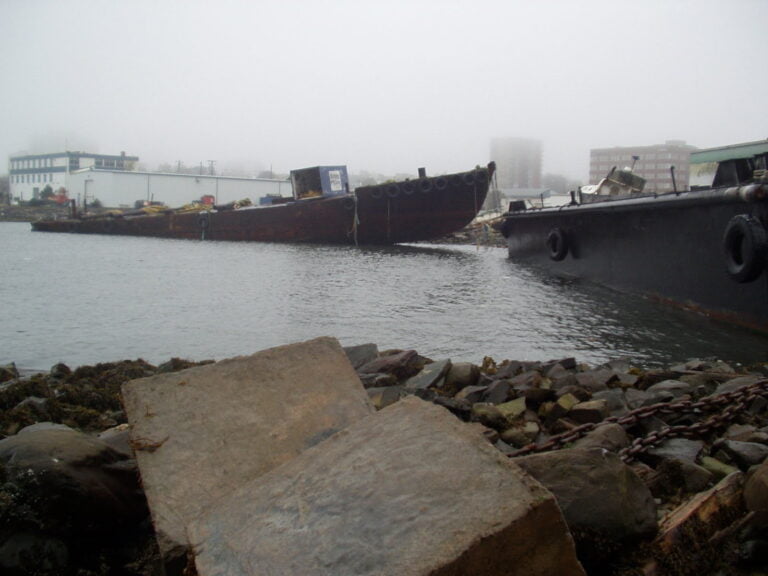

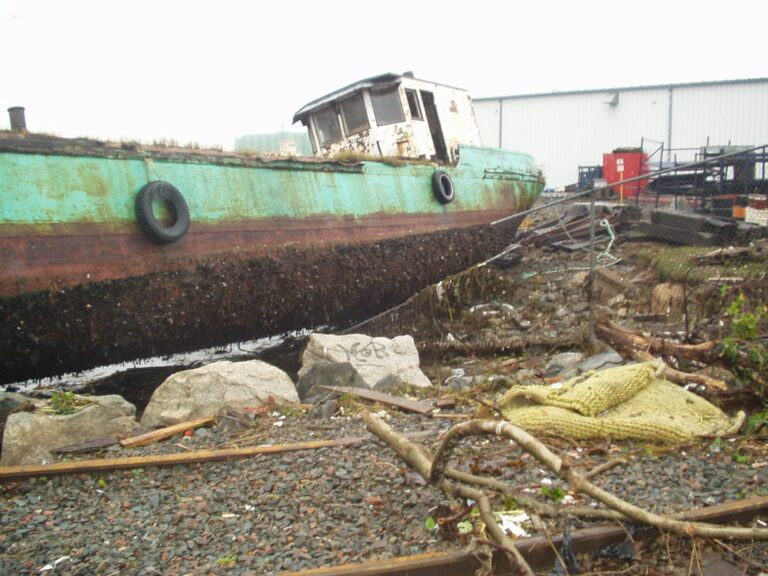
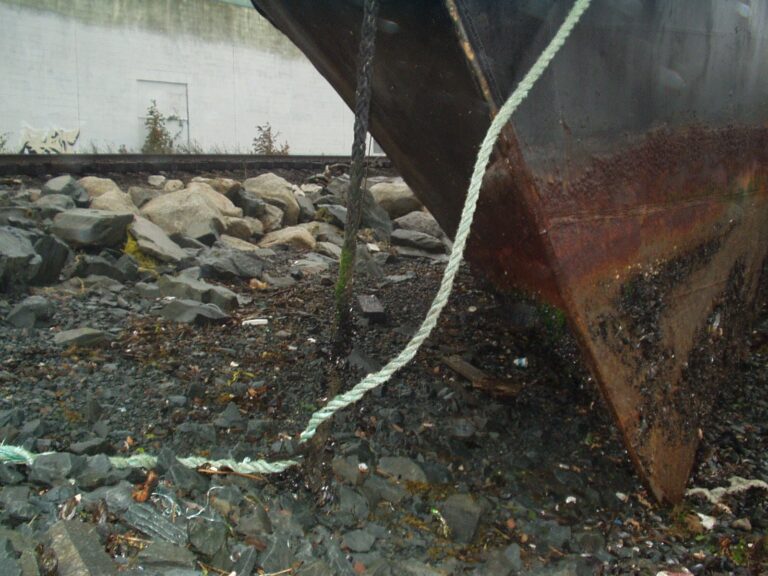
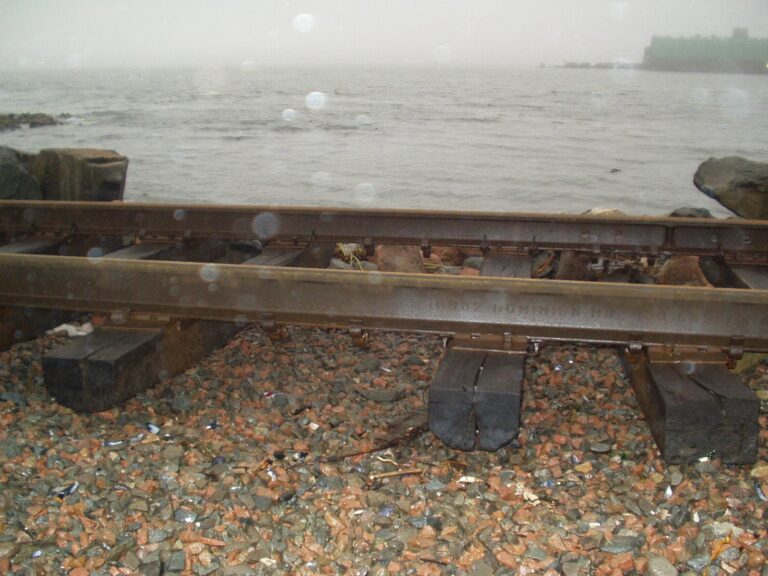
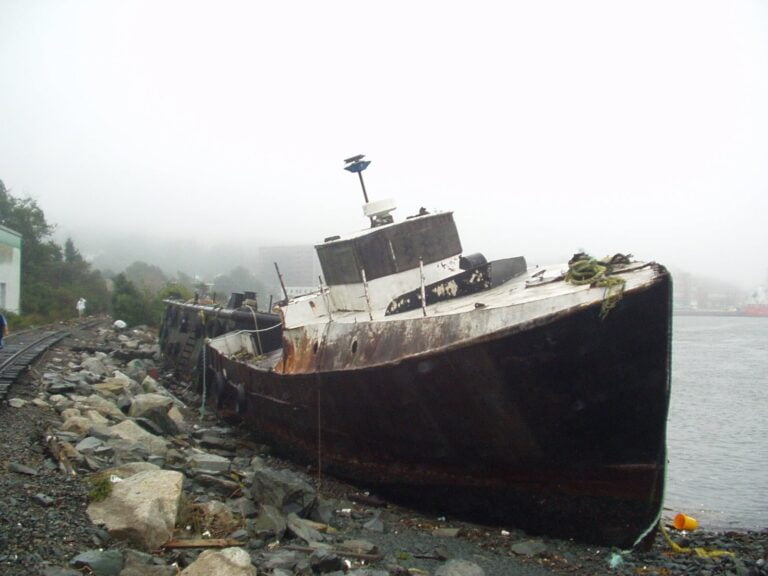



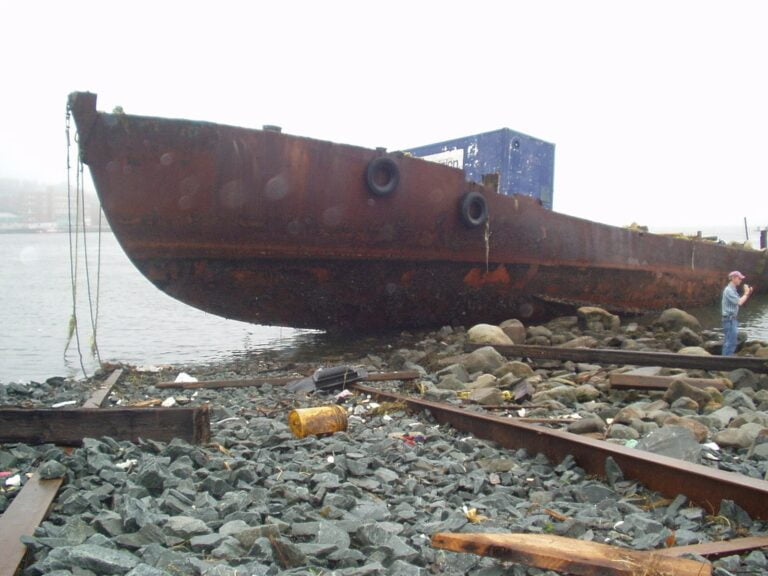

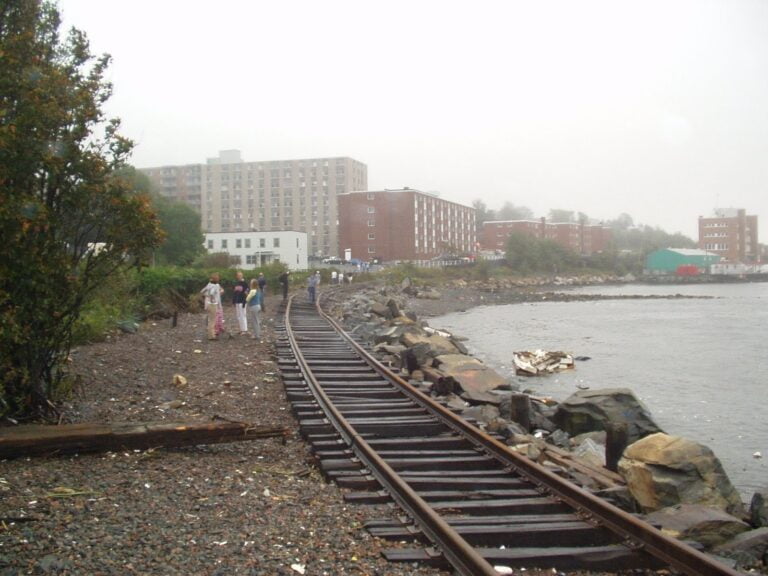
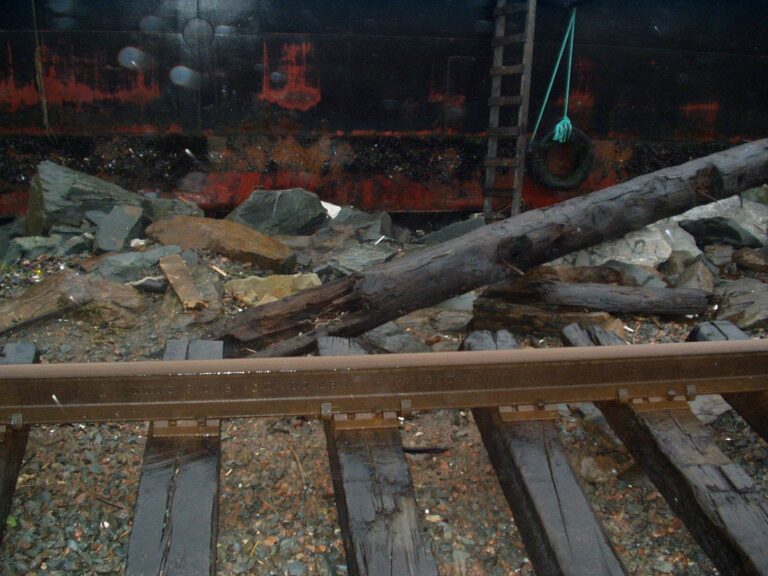
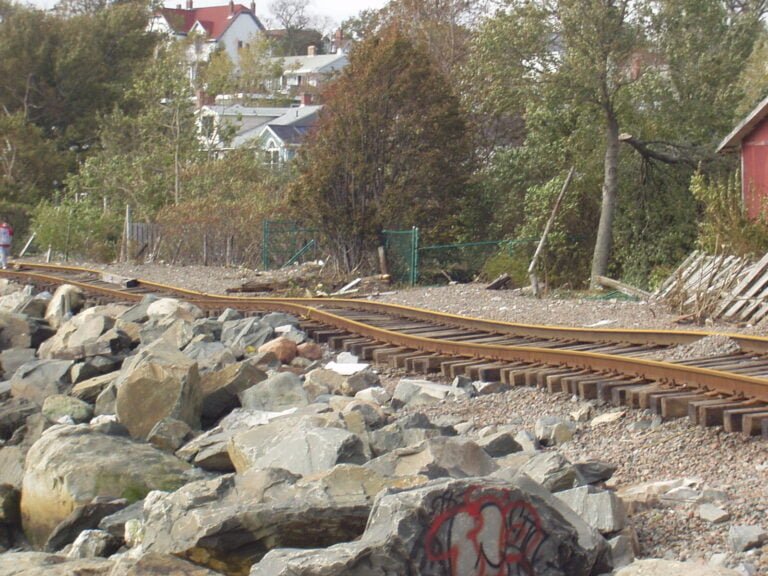
Taken the morning after Juan, September 29th, 2003, and the week following. The debris left in a few of the backyards along Dartmouth Cove (Picture 7 and 9 above) is a good indication of the level of the ocean at the height of the storm.
1832
From The Story of Dartmouth, by John P. Martin:
In January 1832, there appeared in the “Nova Scotian” seven stanzas of poetry written by “Albyn” at Ellenvale on the occasion of the death of John D. Hawthorn. The latter was a prominent merchant of this community, and a Justice of the Peace. He had been a promoter of the Aboiteau, across the Lawrencetown River near the present railway trestle, which resulted in the reclamation of a wide area of dykeland for hay.
The weather that season continued cold. Ice formed in the Coves and extended all over the harbor by mid-February, when the mercury sank to 12 below. Hundreds amused themselves skating across. Sailing ships could not enter the port owing to heavy drift ice, which for a time clogged the entrance.
As for the unemployed Canal workers, this was the winter of their discontent. Contractor Daniel Hoard had made an assignment and was now incarcerated in the debtors’ jail at Halifax. With the whole project at a standstill, poverty and distress prevailed among helpless families in “Canal Town”, which was only partly relieved by intermittent local charity.
The men appealed successively to Canal officers, to Government officials and finally to Lieutenant-Governor Maitland. Even rioting was threatened.
Some went so far as to set fire to the wooden gates at Lock number 6. This brought forth a proclamation from the Government, offering £50 reward for the culprits.
When the Legislature met that winter, the workmen had a long petition prepared explaining their position. They had not received their hire regularly since the summer of 1831. When later on, several left their jobs, they were persuaded to return by Mr. Dealey, a Company Inspector, who assured them that the pay would soon be forthcoming. They asked that any Government grants for the Canal be applied to their wages.
The petition was signed by:
Robert Hunter, John Turnbull, Robert Wilson, Robert Johnston, Michael Murphy, James Sinnott, Thos. McMillan, John Elliot, Wm. Elliot, James Elliot, Thomas Elliot, Hector Elliot, John Murphy, Nathaniel Russell, Jeremiah Donovan, John Shenston, Paul Shenston, James Colbert, Laurence Feeney, John O’Donnell, Wm. Beattie, Oliver Cumerford, Michael Lahey, Andrew Smith, John Bowes, John Evans, Wm. Carroll, Michael Carroll, David Goggin, John Loney, Pat Galaher, Tim Haley, Wm. Russell, James Russell, jr, John Fisher, Dan Nicholson, Thos. Dey, James Hailey, Luke Langley, Morris Power, Wm. Forren, Tom Sullivan, Morris Conden, Timothy Meagher, Alexander Grant, George Tully, James Fitzgerald, Patt Doyle, Thos. Meagher, Michael Dormady, John Beattie, James Young, James Young, sr, James Shortell, Michael Shortell, Tim Hayley, John Wilson, Patrick Devine, Patrick Shea, James Fenerty, Terry Sullivan, Michael Kennedy, Michael Kennedy 2nd, John Kennedy 2nd, Daniel Keating, Danl Sullivan 2nd, James Walsh, Thomas Shea, John Kennedy 3rd, John Kennedy 4th, Danl Sullivan 1st, Cornelius Kennedy, Thomas Sullivan, Andrew Forhin, Wm. Donohue, Pat Murphy, James Coleman, Thos Hogan, Michael Doweling, John Boyle, John Roatch, Donald Flinn and Walter Currie.
When member John Young read the complaint in the House that February afternoon, Charles R. Fairbanks, representative for Halifax, whose heart and soul was in the Canal project, rose to his feet at once to exculpate the Directors of the Company and lay the blame upon the Contractors.
The latter had been paid in regular installments until, forced by circumstances already described, Company funds had become depleted. This was partly due to the dishonest work of at least one Contractor. The men were in the employ of Contractors, and not of the Company, he said.” Payments to Daniel Hoard had been withheld, pending an adjustment.
Mr. Fairbanks warmly assailed members like John Homer of Barrington, who had called the Canal a “Slough of Despond”, not realizing that £50,000 in British capital was being spent in promoting the development of Nova Scotia. The speaker praised the undertaking as a great public work which would tap our immense natural resources through to Minas Basin, and make Halifax harbor the seaport of the Bay of Fundy.
In March, the House voted a sum of £100 to be used for the relief of the distressed workmen. As a matter of record, Governor Maitland had already paid over that amount.
The petition of the Steam Boat Company that year was not so fortunate. Their application for a grant was opposed by several members who contended that the boat stopped for days, weeks and sometimes months during 1831. Their charter was retained only by running an occasional trip.
Despite the explanations of Messrs. Fairbanks and DeBlois, and their pleas that the Directors were each out of pocket by some £500, the vote was defeated. (This was the first rejection of a ferry grant in ten years.)
Of more local interest was a petition from inhabitants of Cole Harbor, Lawrencetown and Preston Roads. Familiar names like Bissett, Kuhn, Tulloch and Wisdom are appended. Christian Katzman’s name is in large bold handwriting.
These people asked for assistance to make improvements “on that part of the road leading from the North and South ferries up over Creighton’s Hill”.
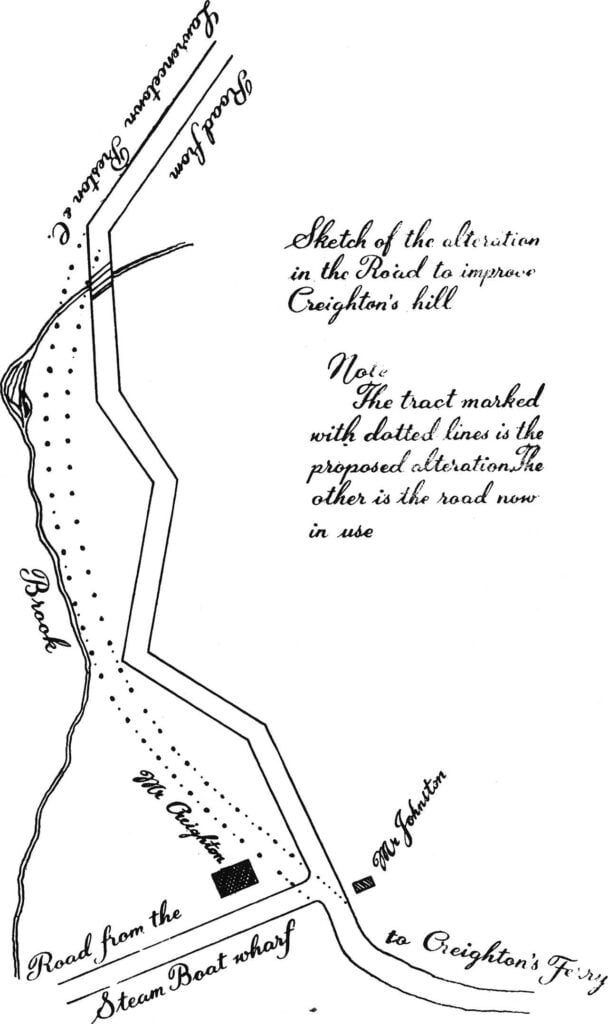
As seen above, the road over that immense bank had been originally cut in zigzag fashion in order to lessen the difficulty of climbing up to the level near the present Mount Amelia residence.
This section, known as “Shoulder of Mutton Hill” was noted for its “amazing steepness”, said the petition. Even in the best of weather, “travellers cannot load their waggons with more than one-half the usual load”. The road was cut into, after every rainstorm because the gutter became clogged with mud washing down the sharp slope.
The sentences quoted from the petition, indicate that the Lower Ferry wharf was also the landing place of much heavy merchandise destined for the eastern sections.
We should note here that the petition mentions the use of Old Ferry Road by teams from the “North” ferry, i. e. the Steam Boat terminus. From this fact, we assume that the present Portland Street was not yet cut in a westerly direction from the foot of Maynard Street. The route then from Cole Harbor districts evidently went down Old Ferry Road and turned westerly along Pleasant Street to the Steam Boat wharf.
As a result of the above petition, John Stayner and John Allen of Dartmouth were subsequently instructed to submit plans for altering “Shoulder of Mutton Hill”.
All the real estate of the late Hon. Michael Wallace was auctioned at Dartmouth that year. It included Medley’s Hotel, stable and garden, together with four lots in rear of the house. Also a corner lot opposite the Church, formerly owned by Adam Miller; a lot south of Skerry’s wharf with a water lot in rear; and another water lot at the end of North Street, 100 by 300 feet. Medley bought the Hotel.
The extensive possessions of John D. Hawthorn were also up for sale at auction. His Dartmouth property consisted of two dwellings, coach house, stable, bake house, a store on the wharf and other buildings. At Lawrencetown were his farm lands, horses, cows, sheep, waggons and a large scow.
Thomas Boggs advertised to let the house on Dartmouth Point formerly occupied by him, with coach house, stable, garden and field. Also his wharf in the Cove. Inquiries were to be left with Mr. Hugh Searl, at Dartmouth Hotel.
(From Prince Street to King Street, the railway now runs through the middle section of the original Boggs’ field. It used to be lined with hawsey and chestnut trees. At the intersection of the railway track with the east side of Prince Street, there once stood a fashionable house which was no doubt the Boggs’ residence; although another plan shows a building at the southwest corner of King and South Streets. Boggs’ plank-floored coach house, converted into a dwelling, still stands at the southeast corner of Prince and South Streets.)
Engineer Francis Hall, who was about to leave the Province, advertised his 10-roomed house, garden, stable, outhouses, with a water-lot in front, near the Ferry. Along with it went the whole of his household furniture, “a very superior horse, harness, saddlery, gig and sleigh”.
John Tapper, a blacksmith, who no doubt fashioned ironwork for the Canal, advertised his house for sale. Andrew Malcom, his one-time partner, offered five more in downtown Dartmouth—all heavily mortgaged. The latter’s account books showed long lists of uncollectible bills. Finally he was forced to make an assignment.
James Synott mortgaged to Donald McLennan for £300, three adjoining dwellings northeast corner of South and Water Streets. Also the “land and store on the north side of the old road leading from Dartmouth to Preston, said road now being obstructed and shut up by the waste-weir”. (Lower stretch of Crichton Avenue on east side.)
John Skerry purchased for £85, two seven-acre lots of Abbeville estate with buildings thereon, commencing at the northeast corner of School Street and Victoria Road. (Until new streets were laid out in that vicinity, the surrounding pastures and woods continued to be called Skerry’s fields.)
Alexander Lyle sold for £40 to Thomas Marvin, block-maker, the property which is now no. 6 Commercial Street.
A lot of land 50 yards from the northeast corner of Ochterloney and Dundas Streets “on which corner stands John Chamberlain’s dwelling”, in Block “A” which had been granted to Christ Church along with Block “G”, was sold in 1832 for £25 to Robert McNesly. The proceeds were used to discharge debts due on the new Parsonage.
James Stanford, the tanner, bought for £85 two of the lots on Ochterloney Street. It comprised a large area of lowland and stream near the present Maple Street.
The first record of the ferry being used for a fire-boat was logged in October of 1832, when the “Sir Charles Ogle” interrupted her schedule to transport the Dartmouth Firemen to fight a conflagration which was raging in the vicinity of Cunard’s buildings at the foot of Proctor Street in Halifax. The newspapers reported that the fire engine “worked on board the Steam Boat, assisted very materially in checking the spread of flames in the rear of the buildings”.
There was a very fashionable wedding out at Mount Edward that summer when widower S. G. W. Archibald, then Attorney General for Nova Scotia, was married to Mrs. Brinley, widow of William Birch Brinley. Rev. Mr. DesBrisay officiated. The same Minister performed the marriage at Dartmouth of Martha Vaughan to Francis Hoard.
Among Dartmouth baptisms were Henry, child of Sophia and Joseph Frame, farmer; Margaret and John, twin children of Maria and John Morton, laborer.
John Thomas Wilson, aged 11, (also on school register) was drowned while skating on the Canal just before Christmas.
A similar tragedy was reported the previous March, when Robert Mills, who missed the last boat at night, attempted to cross to Halifax on the ice opposite the Naval Yard, and was never seen afterwards. He left a widow and two sons.
Other deaths recorded were Michael Meagher, of Dartmouth, aged 39; and Francis Mizangeau aged 30 at Eastern Passage.
Notable deaths abroad in 1832 included Sir Walter Scott. When news reached here in November, it brought forth from “Albyn”, an elegy filling nearly three newspaper columns.

